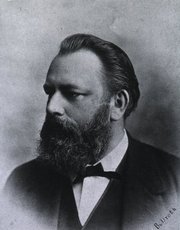This article is part of the series "A Moment in History" where we honor those who have contributed to the growth of medical knowledge in the areas of anatomy, medicine, surgery, and medical research.

Theodor Billroth
Christian Albert Theodor Billroth (1829-1894) was born in Prussia, in the city of Bergen. After being considered a slow learner requiring tutoring at home, Billroth studied Medicine in Berlin. In 1860 he was appointed as Professor of Clinical Surgery.
He is well-know by the partial or subtotal gastric resection surgeries he pioneered. In 1881 he performed the first of what is now known as a "Billroth I" procedure. He was the first to perform a partial resection and anastomosis of the esophagus, as well as the first surgeon to excise a rectal cancer. He is considered one of the Masters of Surgery.
Billroth was also a gifted musician playing the violin and viola. Good friend with Johannes Bramhs, he was sometimes invited to conduct the Zurich Symphonic Orchestra.
The first Billroth I procedure was performed in 1881 in a 43 year old female. Besides the well-known Billroth I and Billroth II subtotal gastrectomies, there are several eponyms that carry Billroth's name. Billroth's concepts on gastrointestinal anastomoses paved the way for the invention of surgical staplers.
Source:
"Christian Albert Theodor Billroth: Master of surgery" Kazi, RA; Peter, RE, J Postgrad Med March 2004 50:1, 82-83
Original image courtesy of Images from the History of Medicine at nih.gov



